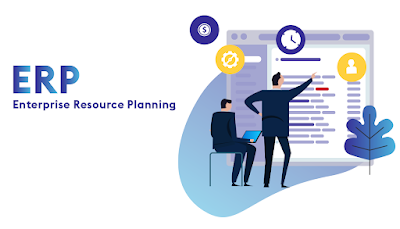Enterprise Resource Planning: An Overview
 |
| Enterprise Resource Planning |
Enterprise Resource Planning is a business process management software that allows an organization to use a system of integrated applications to manage the business and automate many back office functions related to technology, services and human resources. Enterprise Resource Planning systems aim to facilitate the flow of information between all business functions inside the boundaries of the organization and manage the connections to outside stakeholders.
What is Enterprise Resource Planning?
Enterprise Resource Planning refers to packages of software and hardware that
allow the integration of various back office functions such as production,
human resources, finance and accounting to a central system. It automates
processes, collects transactional data and facilitates the flow of information
across all functions within a company such as sales and distribution,
manufacturing, transportation, procurement and project management.
At its core, Enterprise
Resource Planning provides a single, holistic view of core company data
and processes, which can be accessed by various departments. Some common
modules in Enterprise Resource Planning systems include:
- Financial modules like accounting, costing, budgeting etc.
- Supply chain modules for procurement, production planning, inventory
management etc.
- Customer relationship management modules for sales, marketing and customer
support.
- Project management modules for resource allocation and project monitoring.
- Human capital management modules for recruitment, payroll, employee database
etc.
Benefits of Adopting Enterprise Resource
Planning
There are several reasons why companies invest in Enterprise Resource Planning
implementation. Some of the key benefits of Enterprise Resource Planning
systems include:
- Improved operational efficiency by eliminating redundant processes and source
data entry. Enterprise Resource Planning helps streamline workflows and enhance
productivity.
- Enhanced data visibility and informed decision making. Enterprise Resource
Planning places real-time company-wide data at the fingertips of managers and
employees, helping them gain a holistic view of KPIs and make intelligent
decisions.
- Reduced costs through lower inventory levels, optimized resource utilization
and eliminating wastage across functions like procurement, production and
distribution.
- Improved customer service by enabling quick order processing, accurate
delivery schedules and efficient returns/complaints management.
- Global operations can be more cohesively managed through a centralized
Enterprise Resource Planning when a company expands internationally.
- Enterprise Resource Planning promotes compliance and auditing with its
controls on data access and change management tracking capabilities.
Challenges in Enterprise Resource
Planning Implementation
While Enterprise Resource Planning provides plenty of benefits, its
implementation also poses significant challenges that need to be strategically
addressed:
- High costs involving licensing, installation, customization, training and
integration with other legacy systems. Enterprise Resource Planning projects
typically range from hundreds of thousands to several millions of dollars.
- Lengthy implementation timelines stretching over months and sometimes years
depending on the scope of the project and size of the organization.
- Resistance to change from employees unused to new systems and business
processes. Adequate training has to be provided to ensure user adoption.
- Customization challenges in case the required changes in existing Enterprise
Resource Planning modules are major which disrupt the fundamentals of the
Enterprise Resource Planning package.
- Risk of going over budget due to scope creep or unexpected technical issues
during integration with other internal IT systems.
- Loss of productivity initially when the new Enterprise Resource Planning goes
live as employees and managers learn the new system features.
The Way Forward with Enterprise Resource
Planning
To mitigate risks in Enterprise Resource Planning implementation, it is
important for companies to have a well-defined project plan with realistic
timelines, cross-functional involvement and clear goals aligned with overall
business objectives. Ongoing training, customization within tolerable limits
and phased roll-outs can help streamline the implementation process. Using
cloud-based and SaaS-based Enterprise Resource Planning solutions that offer
constant upgrades and instant enabling of new features through the subscription
model are becoming increasingly popular compared to on-premise licensed systems.
Going forward, more Enterprise Resource Planning packages are also expected to
integrate technologies like machine learning, analytics, cybersecurity and
mobile-enablement. When successfully adopted, Enterprise Resource Planning
continues to deliver immense value for enterprises of all types and sizes.
Get More Insights on Enterprise Resource Planning



Comments
Post a Comment